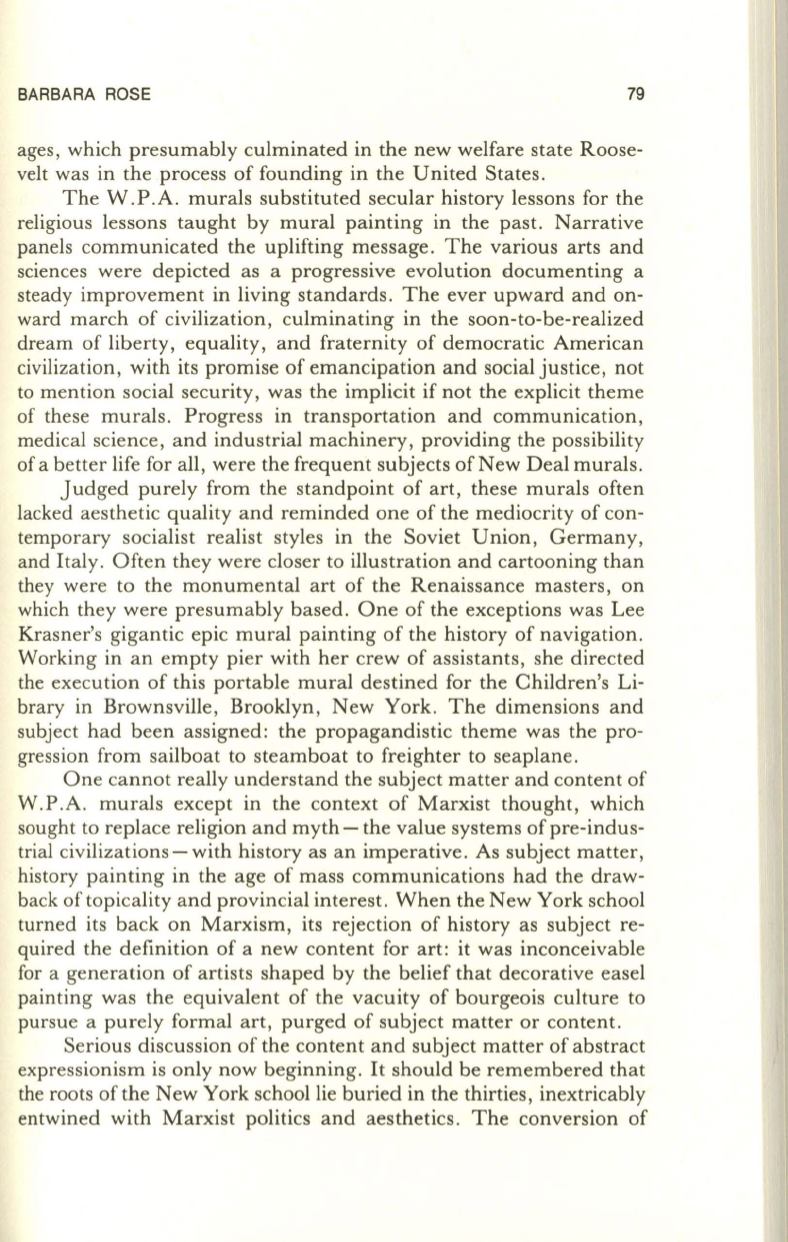
BARBARA ROSE
79
ages, which presumably culminated in the new welfare state Roose–
velt was in the process of founding in the United States.
The W.P.A. murals substituted secular history lessons for the
religious lessons taught by mural painting in the past. Narrative
panels communicated the uplifting message. The various arts and
sciences were depicted as a progressive evolution documenting a
steady improvement in living standards. The ever upward and on–
ward march of civilization, culminating in the soon-to-be-realized
dream of liberty, equality, and fraternity of democratic American
civilization, with its promise of emancipation and social justice, not
to mention social security, was the implicit if not the explicit theme
of these murals. Progress in transportation and communication,
medical science, and industrial machinery, providing the possibility
of a better life for all, were the frequent subjects of New Deal murals.
Judged purely from the standpoint of art, these murals often
lacked aesthetic quality and reminded one of the mediocrity of con–
temporary socialist realist styles in the Soviet Union, Germany,
and Italy. Often they were closer to illustration and cartooning than
they were to the monumental art of the Renaissance masters, on
which they were presumably based. One of the exceptions was Lee
Krasner's gigantic epic mural painting of the history of navigation.
Working in an empty pier with her crew of assistants, she directed
the execution of this portable mural destined for the Children's Li–
brary in Brownsville, Brooklyn, New York. The dimensions and
subject had been assigned: the propagandistic theme was the pro–
gression from sailboat to steamboat to freighter to seaplane.
One cannot really understand the subject matter and content of
W.P.A. murals except in the context of Marxist thought, which
sought to replace religion and myth - the value systems of pre-indus–
trial civilizations - with history as an imperative. As subject matter,
history painting in the age of mass communications had the draw–
back of topicality and provincial interest. When the New York school
turned its back on Marxism, its rejection of history as subject re–
quired the definition of a new content for art: it was inconceivable
for a generation of artists shaped by the belief that decorative easel
painting was the equivalent of the vacuity of bourgeois culture to
pursue a purely formal art, purged of subject matter or content.
Serious discussion of the content and subject matter of abstract
expressionism is only now beginning. It should be remembered that
the roots of the New York school lie buried in the thirties, inextricably
entwined with Marxist politics and aesthetics. The conversion of


